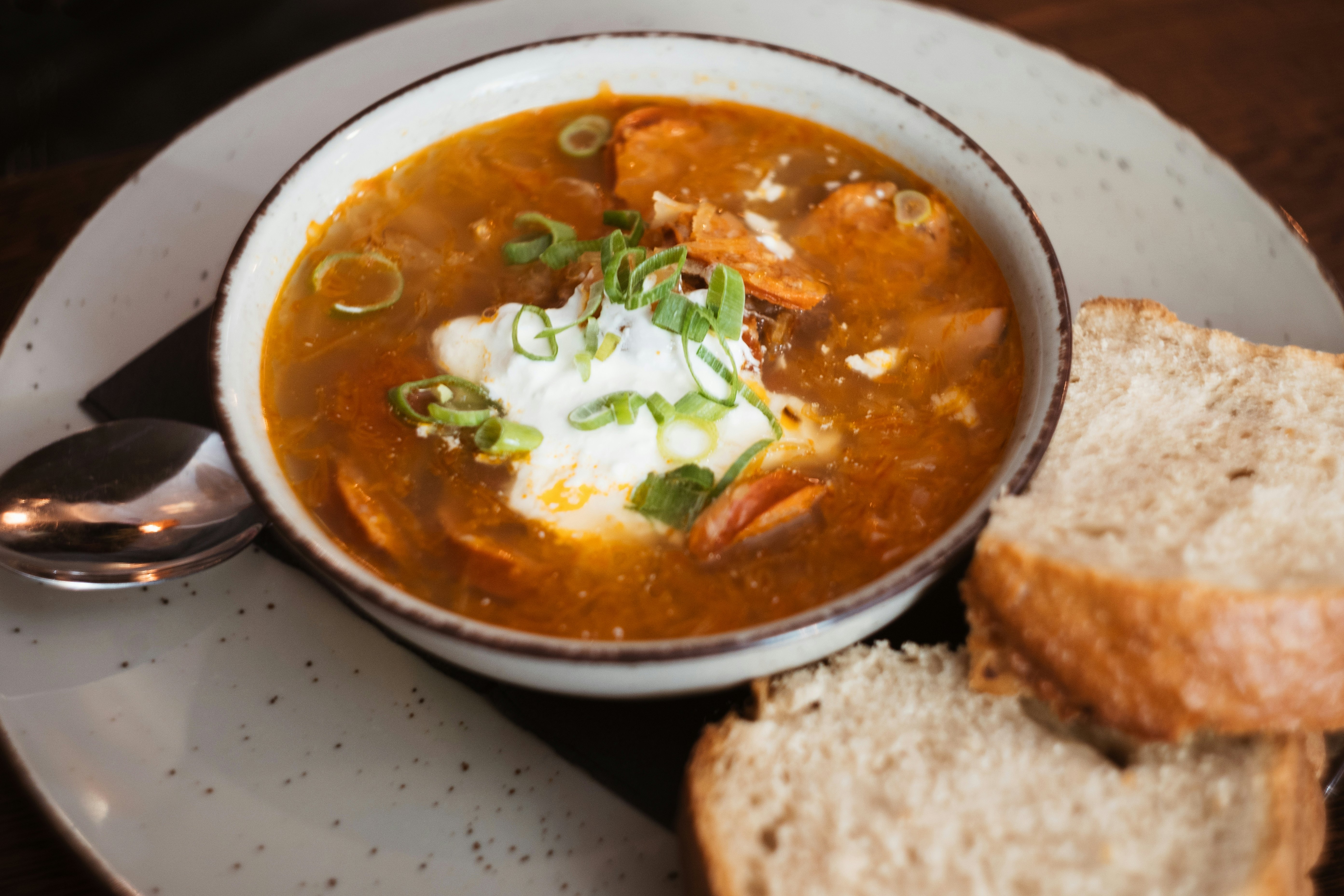

Browsing the produce at Bratislava’s farmers market. Getty Images
Potato dumplings, goulash, sauerkraut soup, sheep cheese...Slovak cuisine delivers robust flavors and extreme comfort in spades.
The cuisine of Slovakia blends deeply rooted customs and seasonal produce with Hungarian, Austrian and Czech traditions. Expect robust flavors and some of the most comforting meals you’ll ever enjoy.
Hearty soups, savory stews and tender dumplings showcase Slovakia’s agricultural heritage. Whether it’s the tangy bite of sauerkraut in kapustnica or the earthy richness of wild mushrooms, Slovak food beautifully captures the essence of the country’s landscapes and history.
Slovakia is one of the best countries to visit next year. See our full list of Best in Travel 2025 winners.

Discover the delights of bryndzové halušky, Slovakia’s national dish
After a breezy bike ride along the Danube or a hike through dense High Tatra forests, nothing recharges you like bryndzové halušky. This classic Slovak meal features chewy potato dumplings and creamy cheese, topped with crispy bacon. It epitomizes the rustic charm of Slovak food.
A unique soft sheep cheese, bryndza is central to this dish, and can also be enjoyed on bread or in spreads. Pair bryndzové halušky with a cold beer or a shot of Slivovica, a local plum brandy, for the complete experience.
Where to try it: The bryndzové halušky at the Slovak Pub in Bratislava is a must-try. One of the oldest and largest restaurants in the capital, it serves the homemade delicacy using fresh ingredients sourced from its organic farm. What’s more, the pub brews its own beer – the perfect complement to this authentic Slovak dish.

Savor Slovak goulash in Komárno
Since Slovakia was part of the Kingdom of Hungary until 1918, it’s no surprise that Hungarian influences are evident everywhere in its cuisine. Paprika pops up on menus all over the country, along with dishes like goulash and lecsó, a pepper and tomato stew.
Similar to its Hungarian counterpart, which is made with beef, onions and garlic, Slovak goulash includes potatoes, carrots and other root vegetables, often served with knedle (bread dumplings). Some chefs add grated apple for enriched flavor and texture. While paprika is prominent in the Hungarian version, Slovak goulash is complemented by caraway seeds, marjoram and other spices.
Local wine Tokajská Aszú balances the richness of goulash with its acidity and sweetness, a delightful combination indeed.
Where to try it: Treat yourself to a plate full to the brim at Restaurant Klapka in the historic Zichy Palace in Komárno. If it’s the season for wild boar and deer goulash, get yourself a table at Hubert Varga in the historic center, just 500m (1640ft) from the Danube and the nearby thermal spa.

Warm up with kapustnica in the High Tatras
In northern Slovakia, the mountainous terrain shapes a cuisine centered on hearty, warming foods perfect for cold climates. In the High Tatras, local ingredients like forest mushrooms and berries are staples, with game meats such as venison and wild boar also popular. Dairy products, especially from sheep, are also common.
Kapustnica (sauerkraut soup) is a winter favorite. This robust dish features tangy sauerkraut and a mix of meats like pork and sausage, and sometimes smoked ham or bacon for added depth. Made with onions, garlic and paprika, the broth is rich and flavorful. Dried mushrooms add an earthy note, while potatoes provide a comforting, starchy touch. Seasoned with bay leaves, black pepper and caraway seeds, kapustnica is warm, aromatic and deeply satisfying – and often tastes even better the day after, as the flavors continue to meld.
Where to try it: Visit Koliba Tatry in Nova Lesna for a wide selection of local dishes including kapustnica. Another must-try is the sauerkraut soup at Koliba Patria in Štrbské Pleso, where the authentic flavors and quality ingredients impress.

Fermenting foods turns tradition into trend
Pickling and fermenting, especially of sauerkraut, play a vital role in Slovak cuisine. This traditional approach took root due to the historic necessity of preserving food and minimizing waste. Today, the tradition is once again growing in popularity thanks to fermented food’s health benefits, and the rich depth of flavors the technique imparts.
In Slovak culinary tradition, fermented and preserved foods develop unique, complex flavors that fresh ingredients simply don’t deliver. These tastes are fundamental in dishes like kyslá polievka, a sour soup made from fermented wheat or barley. Today, a new generation of Slovak chefs is reinvigorating this practice by creatively integrating fermentation into modern cuisine.
They’re experimenting by fermenting new ingredients such as garlic, carrots and radishes, resulting in sauces and dressings with intriguing flavor profiles. Beyond savory dishes, chefs are adding fermented ingredients to cocktails and beverages, too, creating unique – and uniquely Slovak – concoctions. Fermented elements also enhance desserts, adding subtle and complex accents to sweet preparations.
Where to try it: At ECK Restaurant in Devín (a town many visit for its storied castle), pickled autumn pears accompany white chocolate mousse infused with milk, juniper berries and walnuts – an ingenious mix of heritage and innovation. To accompany the seven-course tasting menu, choose a subtly sparkling, delicately acidic fermented black-tea drink macerated with fruits and herbs. Expect intricate flavors akin to those found in fine wine.

Vegetarians and vegans
In larger cities like Bratislava and Košice (Slovakia’s eastern second city), vegetarian and vegan restaurants are on the rise, with many conventional spots now offering options as well. In rural areas, however, plant-based eaters many find things more challenging. Still, though Slovak cuisine is famously meat and dairy-heavy, vegetarians and vegans can still enjoy the country’s bounty with a bit of creativity.
For example, bryndzové halušky can be prepared without bacon or sausage, and vegans can use plant-based cheese instead of bryndza. The lard or butter that typically accompanies lokshe (potato flatbreads) can be substituted for vegetable oil or vegan spreads. Such dishes pair wonderfully with traditional (and traditionally vegan) šalát z červenej repy (beetroot salad) or uhorkový šalát (cucumber salad).














